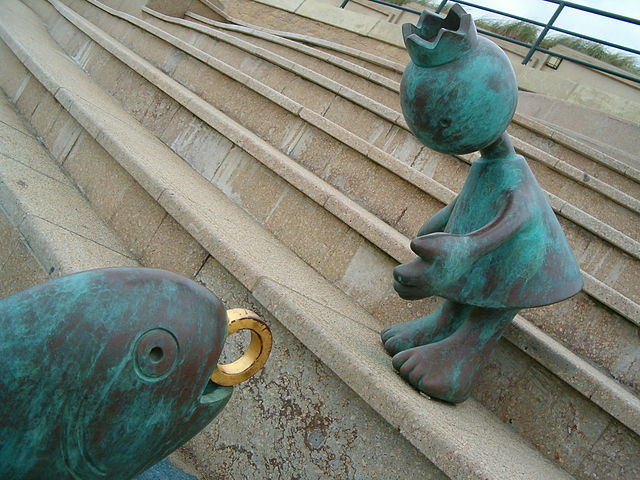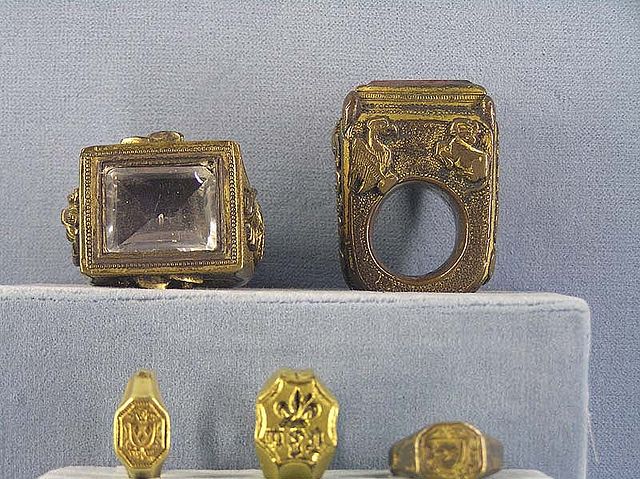A magic ring is a mythical, folkloric or fictional piece of jewelry, usually a finger ring, that is purported to have supernatural properties or powers. It appears frequently in fantasy and fairy tales. Magic rings are found in the folklore of every country where rings are worn. Some magic rings can endow the wearer with a variety of abilities including invisibility and immortality. Others can grant wishes or spells such as neverending love and happiness. Sometimes, magic rings can be cursed, as in the mythical ring that was recovered by Sigurð from the hoard of the worm Fáfnir in Norse mythology or the fictional ring that features in The Lord of the Rings. More often, however, they are featured as forces for good, or as a neutral tool whose value is dependent upon the wearer.
Statue in Scheveningen, Netherlands, depicting a variation on the fairytale "The Fisherman and His Wife"
"Brynhild, Sigurd and the Rings" Faroe stamp depicting magical rings from Germanic mythology
In this scene from Götterdämmerung, Siegfried tells the Rhinemaidens: "If you threaten my life, hardly you'll win from my hand the ring".
A ring is a round band, usually made of metal, worn as ornamental jewelry. The term "ring" by itself denotes jewellery worn on the finger; when worn as an ornament elsewhere, the body part is specified within the term, e.g., earrings, neck rings, arm rings, and toe rings. Rings fit snugly around or in the part of the body they ornament, so bands worn loosely, like a bracelet, are not rings. Rings may be made of almost any hard material: wood, bone, stone, metal, glass, jade, gemstone or plastic. They may be set with gemstones or with other types of stone or glass.
Ruby ring
Henig II rings from the Snettisham Jeweller's Hoard
Episcopal rings for bishops and archbishops. (Musée national du Moyen Âge, hôtel de Cluny, Paris)
Image: Regards acrostic ring







